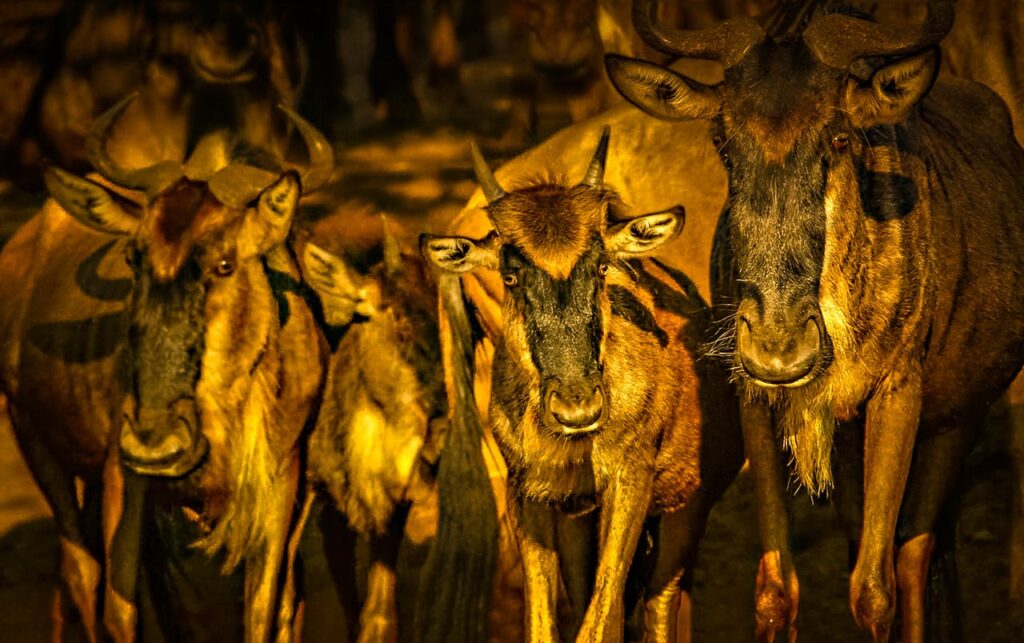By a Camp Owner Living in the Mara
After running Kambu Mara Camp for the past two years, one of the most frequent questions I get from first-time visitors is:
“Is the Masai Mara fenced?”
It’s a fair question — especially from guests who’ve visited other safari parks around the world that are enclosed, monitored, and carefully separated from surrounding communities. But the answer here is clear and deeply connected to what makes the Mara so special:
No, the Masai Mara is not fenced.
🌍 An Open Ecosystem — Wild by Design
The Masai Mara National Reserve is part of the greater Serengeti-Mara ecosystem, which stretches across southern Kenya and northern Tanzania. It covers thousands of square kilometers of open, unfenced savannah that wildlife moves through freely.
There are no perimeter fences around the reserve. Animals cross in and out of the Masai Mara daily — grazing, hunting, and migrating — just as they’ve done for centuries. This natural freedom of movement is especially vital for events like the Great Wildebeest Migration, where herds must roam across vast plains without barriers.
🏕️ The Open View from Kambu Mara Camp
At Kambu Mara Camp, located near Sekenani Gate, we’re just on the edge of the main reserve. From our camp, you can look out across a mix of rolling bushland and open plains, and — on a clear day — see all the way toward the reserve itself.
The only man-made feature that breaks that view is the Sekenani–Talek road, a dirt track that connects nearby villages and conservancy outposts. But there’s no fence between us and the Mara. No gates, no wires, no artificial border.
At night, we sometimes hear lions roaring from deep inside the reserve, and hyenas calling nearby. In the early mornings, you might see giraffes, antelopes, or zebras grazing just outside the camp boundary. This is not a zoo — it’s the wild, flowing naturally between protected lands and community conservancies.
🛖 Beyond the Reserve: Conservancies, Not Barriers
Surrounding the Masai Mara National Reserve are community-owned conservancies — like Naboisho, Olare Motorogi, and Lemek. These are not fenced either. They are open extensions of the Mara ecosystem where wildlife continues to move freely.
What separates these conservancies from the reserve is management style, not fences:
- Conservancies limit the number of vehicles
- They offer walking safaris and night drives (not allowed in the main reserve)
- Lodges are more spaced out, and tourism income supports the local Maasai landowners
At Kambu Mara Camp, we often take guests on bush walks through unfenced land right behind the camp. This land connects directly to the wider ecosystem — meaning you’re standing in the same landscape used by migrating zebras, free-ranging lions, and local herders alike.
🦓 Why the Mara Stays Unfenced
Keeping the Mara unfenced is crucial for conservation. Here’s why:
- Wildlife Migration: The wildebeest, zebra, and other animals migrate from the Serengeti into the Mara annually. Fences would block this ancient movement and could devastate populations. Read how conservancies such as Nashulai is opening up wildlife corridors by removing fences put up near the Reserve.
- Ecological Balance: Predators and grazers depend on freedom to move in search of food and breeding grounds, especially during the dry season.
- Cultural Integration: The Maasai people have coexisted with wildlife for generations. Their pastoral lifestyle thrives in the same open land. Fencing off the Mara would disrupt both ecological and cultural systems.
- Economic Access: Community conservancies benefit financially from wildlife tourism because they remain part of the connected ecosystem. Fencing would restrict these benefits to only those inside the reserve.
⚠️ Are There Any Fences in the Area?
There are limited, localised fences in specific areas for specific purposes:
- Around private farms or homes to protect livestock
- Around lodge perimeters for safety — including electric fences at some high-end camps
- Along a few human-wildlife conflict zones to prevent elephants from raiding crops
But these are not border fences. They don’t interfere with large-scale wildlife movement or the open nature of the ecosystem.
📌 Common Misconceptions
| Misconception | Reality |
|---|---|
| The Mara is fenced to keep animals in | ❌ Animals roam freely between reserve and beyond |
| There are gates like in a zoo or park | ❌ Gates exist only for entry ticket control at specific access points (e.g., Sekenani, Talek, Oloololo) |
| You’ll only see wildlife inside the reserve | ❌ Wildlife is everywhere — including conservancies and community land |
🧭 Final Word — Why It Matters
When you come to stay at Kambu Mara Camp, you’re not just visiting a lodge — you’re stepping into a living, breathing ecosystem that stretches far beyond any reserve border. The lack of fencing is not an oversight — it’s a deliberate, powerful choice that honors the rhythm of wildlife, the culture of the Maasai, and the interconnectedness of land and life here.
So no — the Masai Mara is not fenced. And that’s exactly what makes it extraordinary.

